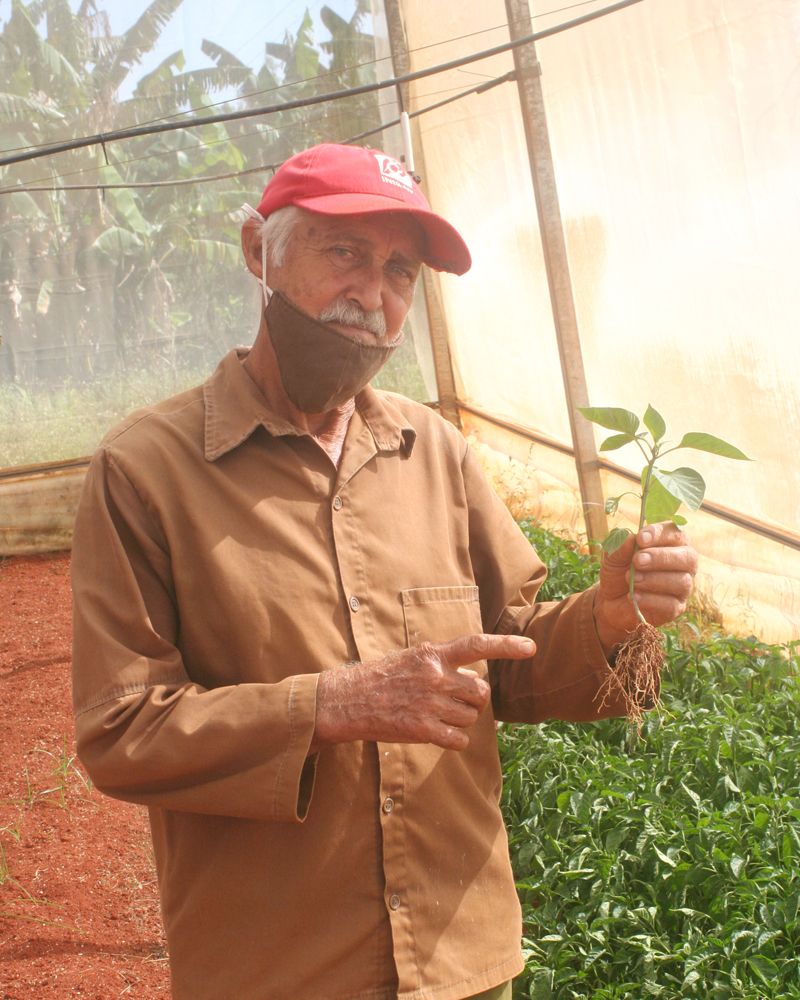
Artemisa, May 21 (ACN) For Jorge Luis Martinez Figueroa, a farmer from Artemisa, good agricultural yields cannot be achieved without the use of good conditions, which is why he directs his efforts to obtain them from ecological agricultural work and the contributions of Cuban science.
This farmer, owner of farm La Ernestina, belonging to the Sierra Maestra Credit and Services Cooperative (CCS), in the capital of Artemisa, today produces seven types of seedlings of tomatoes, two of eggplant, five of hot peppers and three of cabbage. , in two covered farmhouses, delivered through the Small Donations and Local Development (Prodel) cooperative projects.
He explained to ACN that seedlings of tomatoes, chili peppers and eggplant are sourced from the farm’s local seeds, while cabbage seeds are imported.
Both councils have accurate local irrigation systems, pressure gauges and automatic fertilization control, while the infrastructure favors the quality of the protected crop by avoiding biological effects, pests and diseases.
According to Martinez Figueroa, covered planting houses ensured conditions that were safe from the effects of climate change, for which he joined cooperative projects until he obtained a local genetically improved seed.
It might interest you. Local development fair Tapia Fonseca Tours in Holguin (+ photos)
He explained that this result was also possible due to good management and joint work with the Liliana Dimitrova Research Institute of Horticulture (which is testing the tomato variety L 43), the National Institute of Agricultural Sciences (INCA) and the Unit of the Scientific and Technological Base (UCTB) of Alquízar, among other centres.
The producer confirmed that the quality of the seeds and seedlings is also guaranteed by the preparation of the substrate, which uses earthworm humus obtained on the farm, zeolite, rice straw, BIOFER, from the Soil Institute (suitable for nitrogen-absorbing plants) as well as bio-activators EcoMic and QuitoMax from INCA.
Today it has contracts with the agricultural company Artemisa, various forms of production, the municipal education directorate and municipal producers.
He confirmed that he is working with the National Institute of Plant Health on the control of bean thrips planted in the Basic Cooperative Production Unit of the city of Gregorio Carrega City (UBPC), and is conducting experiments on his farm on containing nematodes or parasites in the soil, one of the main problems affecting agriculture, with the use of tree neem;
This farmer’s work goes beyond the farm, taking on the role of teacher for several theses at Artemisa University, one of which is on Melaleuca, an invasive plant from which oil is extracted, used to control pathogens.
La Ernestina, the place where science and tradition breathe, stands out for its prolific orchard of fruit trees, exotics such as sour guava, many nearly extinct citrus fruits, about 80 Jamaican flower plants, raw materials for wine, juices, teas and jams

“Social media evangelist. Student. Reader. Troublemaker. Typical introvert.”

:quality(85)/cloudfront-us-east-1.images.arcpublishing.com/infobae/TEQF6EONZRFGLLLDIDD4L2O4EE.jpg)

:quality(75)/cloudfront-us-east-1.images.arcpublishing.com/elcomercio/XU32LRAEZFDDPNVHLFU3CKVBYY.jpg)



More Stories
Venezuela ranks fourth in female leadership in science and technology in Latin America
In Portuguesa and Sucre they explore the wonderful world of science
The university court overturns the expulsion of two teachers and a chemical sciences student